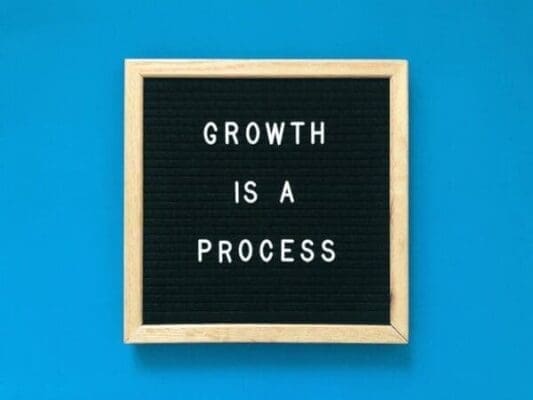In the future, people who are not coaches will not be promoted. Managers who are coaches will be the norm”
– Jack Welch, former Chairman & CEO of General Electric
Coaching has evolved into an important tool for motivating and empowering individuals to achieve their goals and to provide ongoing career development. Coaching is defined by the International Coaching Federation (ICF) as “collaborating with clients in a thought-provoking and creative process that inspires them to maximize their personal and professional potential.”
Many organisations have recognised the value of coaching and are establishing a coaching culture.
So, Exactly What is a Coaching Culture?
Imagine a workplace culture in which team members play to their strengths, encourage one another to be their best selves, and champion innovative solutions. A coaching culture fosters the development of these moments. Learning can come from a variety of sources in such a culture, including peers, managers, direct reports, and external coaches. Everyone benefits when everyone in a company can be a coach.
A coaching culture exists when an organisation recognses, values, and embraces coaching as an important component of its leadership and development strategy.
What is a Coaching Mindset?
A coaching culture mindset encourages and empowers employees to learn and grow in a safe environment, resulting in psychological safety, which improves productivity and performance and aids in employee retention.
Leaders with high emotional intelligence (EQ) inspire and motivate their employees. This demonstrates the employee’s high discretionary effort toward their leader. They frequently go above and beyond the job’s minimum requirements; they go the extra mile.
The emotional impact we have on others is not something that happens quickly. We all get to choose our reputations or legacies: we all get to choose how we show up.
What is a Coaching and Mentoring Culture?
A coaching culture is made up of three legs: internal coaches, external coaches, and managers who all use coaching as a leadership style to transform potential into performance.
To understand how the three legs of the stool interact, first define internal and external coaches.
Sticky Learning ® is 7 times more effective than 1-day training courses. Plus, you will get a Chain of Evidence proving your Return on Investment. Discover soft skills training that changes behaviours long term.

Internal Coaches

Internal coaches are employees who have received core coaching competencies training. Having an in-house coaching service department allows a company to provide coaching to its employees at a low cost.
Aside from the cost-effectiveness of having a bench of internal coaches, another advantage is that they have first-hand knowledge of the company culture and inner workings. These are insights that the external coach lacks.
External Coaches
External coaches are private practice coaches who are hired on a contract basis. Working with external coaches has the advantage of providing professional coaches when none of the Internal Coach team members is suitable or appropriate for the person seeking coaching.
Coaching as a Leadership Style
Coach training is considered Leadership 101 in order for an organisation to achieve a coaching culture, and all leaders on the management track are trained as professional coaches.
However, coaching as a leadership style can differ from most one-to-one coaching relationships. A manager, for example, can and should default to coaching competencies as their primary leadership style; however, it is not always appropriate or possible for every conversation with a direct report to be purely coaching.
Frequently, the manager who makes the final decision must correct a direct report or exercise authority. The power dynamic may impede the level of trust and safety that we seek in coaching conversations, but it remains an essential component of management.
How Do You Create a Coaching Culture?
Organisations with a successful coaching culture show up for their employees, and as a result, their employees have a strong sense of loyalty to the company. Consider the following coaching culture framework:
Step 1. Begin at the Top

Developing a coaching culture begins with the C-suite. Senior leaders can work together to develop a vision for the company that outlines what is required to create a culture shift and how to sustain it once it is in place. Furthermore, when senior leaders have firsthand experience with coaching, they not only reap the benefits and gain a better understanding of it, but they also demonstrate their dedication and the importance of coaching to the rest of the staff.
Step 2. Trickle Down
Mid-level leaders take the ball after senior leaders have determined what culture shift is required. Directors and managers are involved in the day-to-day activities of the organisation and have a true pulse on what is and is not working. Mid-level executives can unlock their creativity through coaching and discover the most effective ways to begin implementing the necessary changes and improvements with the support of senior leaders.
Mid-level leaders can then identify high-performing individual contributors who would be excellent candidates for coaching to help them advance their careers and move into leadership positions.
Step 3. Implement a Coaching Model
As leaders and individuals gain coaching experience, they can begin to implement certain practices in one-on-one meetings, team meetings, and performance conversations, such as:
- Asking questions
- Practising active listening
- Giving and receiving feedback
- Creating goals and action plans
Step 4. Establish Accountability
Create fun and thoughtful ways to assist each person in working towards these goals once goals and action plans have been established. Is your company implementing an employee reward system? Creating one fosters an atmosphere of appreciation and recognition. Determine what motivates your employees and reward them accordingly. When teams collaborate and support one another in their goals, they not only build a coaching culture but also build stronger, more resilient teams.

You can also refer to this creating a coaching culture pdf for more pointers and tips.
What Does a Coaching Culture Look Like?
The following are seven common themes in organisations with thriving coaching cultures:
1. Employees Communicate Openly
You might hear phrases like “How do you think that went?” or “What might you do differently next time?” These in-the-moment coaching opportunities foster greater openness to giving and receiving feedback than organisations where you might instead hear, “Let’s schedule a time to debrief.”
2. Employees Open up to Their Leaders Because Their Leaders Understand How They Feel
When leaders demonstrate empathy, they demonstrate that they are genuinely interested in their employees’ lives, including personal and professional challenges. Empathetic leaders recognise the emotions of others and prioritise the development of genuine relationships.
3. Leaders Listen Intently and Strike a Balance Between Seeking and Telling
Leaders listen to their employees’ concerns, feedback, and challenges. They clarify by asking clarifying questions and only offer advice after listening and clarifying.
4. Leaders Coach People Rather Than Problems
Leaders should have a mental toolkit of how and what questions to ask in order to stay curious about their coachee and assist the coachee in developing problem-solving skills. Coaches should not simply offer solutions to problems.
5. Employees are Dedicated to Their Growth

Coaching can help employees and leaders at all levels be excited about taking on new challenges and responsibilities, rather than feeling like they are simply carrying out the agenda of another leader.
6. Leaders Provide Assistance Without Becoming Involved
Instead of taking over tasks or projects for their employees, coaching-focused leaders empower them to own and execute their own responsibilities. Leaders may inquire, “How can I assist you?” but they do not abdicate responsibility from their employees.
7. Leaders Embrace Change and Learn From Their Team Members
Everyone in the organisation believes that if they work hard enough, they can learn new skills or improve existing ones. Collaborating and coaching one another is an important way to broaden abilities and solve difficult problems.
What to Consider When Matching Coaches to Leaders
Similar to leaders, coaches approach their roles with a variety of experiences and perspectives. Interview the coaches to learn about their areas of expertise and references before assigning them to leaders. Some coaches have coaching experience with senior leaders to assist with succession planning and other core organisational development changes.
Other coaches are adept at providing feedback from assessments or working one-on-one with first-time leaders as they build foundational skill sets. Coach fit is critical for developing trust and having candid conversations. The coachee’s needs must always come first.
How Can Leaders and Teams Best Practice Coaching?
Remember that coaching training should not be all theory. People need opportunities to practice core skills like giving and receiving feedback, having difficult conversations, and more if coaching skills are to stick.

So, how can organisations assist people in developing their coaching skills? Here are a couple of examples:
- Virtual Reality: Use a realistic simulation to practice having difficult coaching conversations in a safe environment where failure is acceptable.
- Use chatbots to practice coaching conversations and self-insight tools to learn your coaching strengths and weaknesses.
- Leadership Assessment: When one-on-one coaching begins with a leadership assessment, the effectiveness of the coaching is enhanced. Assessment data can be used to identify skill gaps that will be the focus of coaching.
Why is a Coaching Culture Important?
A coaching culture has an impact on both the organisational and individual levels. It drives changes in key areas such as organisational transformation, digitalisation, high performance, cultural shifts, and diversity and inclusion at the company level. On the people side, a coaching culture supports an employee’s entire journey within your organisation, from onboarding to rejoining after a long absence; from leadership development to adjusting to remote and hybrid work; learning and development opportunities, and even internal lateral career pivoting.
Furthermore, if properly followed up with small, achievable steps, individual coaching should reflect a more robust and happier company culture in general. Furthermore, when employees are happy and productive, we can expect better products (or services) and stronger customer loyalty. To back up these claims, Gallup conducted a study in 2017 that looked at management processes in companies that had implemented a coaching culture and discovered:
- Increase in sales (10% to 19%).
- Increase in profit (14% to 29%).
- Higher customer engagement (3% to 7%).
- Increase in engaged employees (9% to 15%).
- Fewer safety incidents (22% to 59%).
There are some other coaching culture benefits like higher levels of engagement, productivity, and performance (both on the employee and business sides), as well as:
- Better relationships.
- Improved conflict resolution abilities.
- General levels of motivation and resilience.
- Improved employee retention.
But How Does a Coaching Culture Create All These Benefits?

A coaching culture first and foremost helps produce a sense of community; after all, we all become students and teachers at the same time – we need each other. And that’s exactly why coaching is such an effective way to create something new together, reduce stress and increase employee retention. Coaching allows us to work at full strength by helping each other, not just ourselves – that’s how coaching impacts productivity.
Coaching also promotes creativity and innovation by strengthening personal responsibility – after all, it takes quite a bit of knowledge to be able to coach other employees. A coaching approach also helps teams look at things from many different perspectives, which increases problem-solving skills and thus improves teamwork.
A coaching culture creates customer satisfaction by enabling customers to work with the best possible solution based on trust and commitment. In addition, a coaching culture creates employees who are open to change, because change is also coaching! Coaching enables us to look at things from a different perspective, which means that resistance to change decreases. In the coaching culture, people not only coach each other in their specific areas, but coaching becomes part of everything they do.
Who is Responsible for Creating a Coaching Culture?
The coaching process works best when upper and middle management commits to it. This is because only they have the authority to allow their employees to participate in coaching. Employees, on the other hand, should be aware of the coaching process in order to participate. Only when managers and employees pull together can coaching create a sense of community throughout the organisation.
Conclusion
Developing a coaching culture does not happen overnight; it takes time and effort. Stronger relationships will emerge when each leader in the organisation is dedicated and committed to creating a positive, strong, and trustworthy coaching culture. Maintaining a coaching culture will continue to produce strong, empowered, and successful leaders, who will strengthen and empower the organisation as it grows and prospers. You can check out the coaching culture magazine for up-to-date information.




